Page 7
Part 1: Ken’s story
The Kiddle family in 1963. From left: Vivien, Jackie, Ian, Marion, Leigh, Ken, Edwin.
During this period Ken and Marion had two more children, Jackie (b. 20.03.1957) then Leigh (b. 30.05.1961).
At the time orchards were not grassed down. Fruit growers did not have the flash equipment that we do nowadays and Ken recalls an incident when he and Marion were out spraying the trees. At the time you sprayed using a hand held boom which you directed the spray with. The boom was attached to the tractor. Marion was driving the tractor while Ken took the boom. The machinery was very noisy so she did not hear when he yelled at her to go slower. Ken, desperate to get Marion’s attention, threw a piece of dirt at the tractor but it hit Marion in the back of the neck[.] She stormed off and that was the end of the spraying for that day.
There was a lot of local spirit in those years and the local children, organised by Ian McLeod who later became a teacher, sang carols around the neighbourhood each Christmas and performed various shows. A highlight of the year was the Fruitgrower’s picnic, with lots of prizes for sack races, wheelbarrow races, egg and spoon races, tug-o’-war, etc etc, a big lolly scramble, swimming in the river, in fact every child’s delight imaginable.
Ken and Marion went on [to] extend their orchard, buying 12 acres over the road. They then became partners with Dr Don McKenzie, a good friend and local pomologist (apple research scientist). They bought several acres of bare land to implement a new orcharding scheme using the central leader system he had developed. They called this orchard Huarangi (food of the gods). They later subdivided so that Don and his wife Joy could build a house. In 1977 Ken and Marion also built on this block and this is where they now live.
In about 1961 Ken was elected to the local Fruitgrower’s Association and in 1966 he was appointed to the New Zealand Apple and Pear Marketing Board which took him away from home a lot. One year Ken was away from home for one hundred days serving the apple and pear board. Once when he returned from one of these trips, as soon as he walked in the door he had to remove a dead possum that had fallen down the back of the chimney into the old coal range and had been left there until he returned. Maggots had started
Witnessing the arrival of the two millionth carton of apples from New Zealand at a Belgian wharf (1982). Ken is fourth from the left.


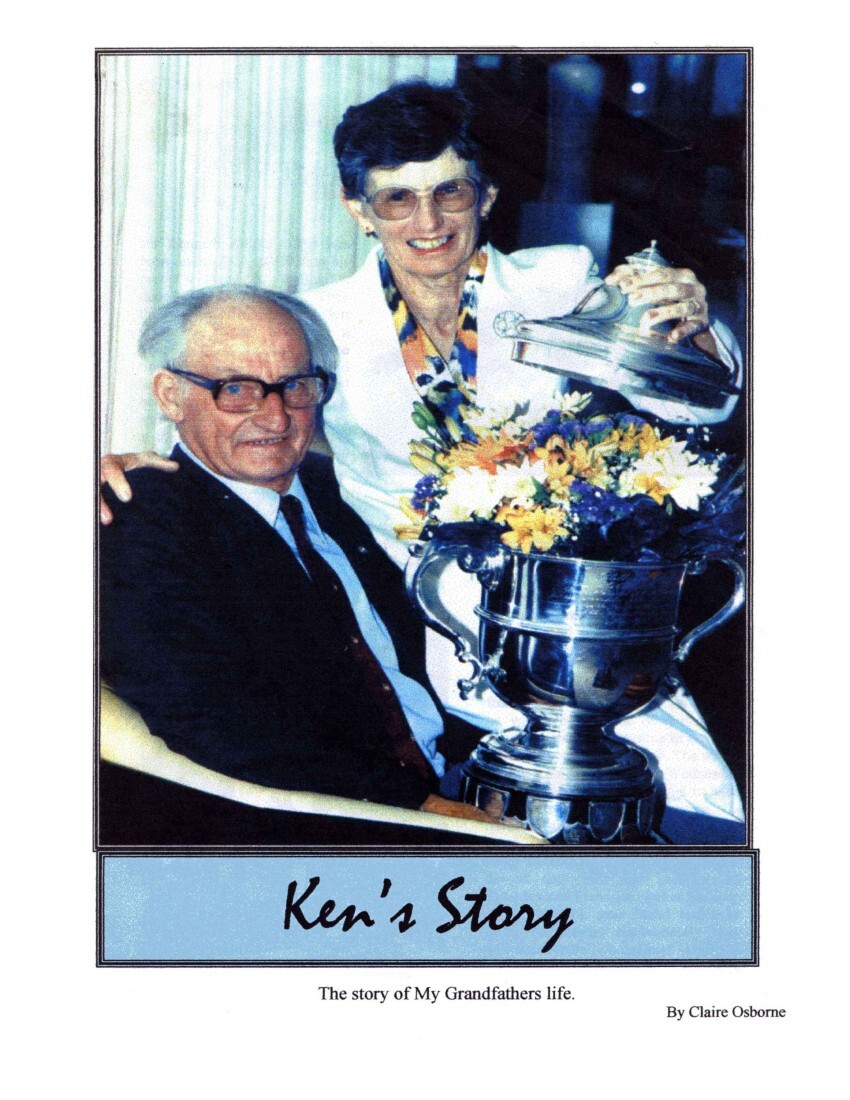

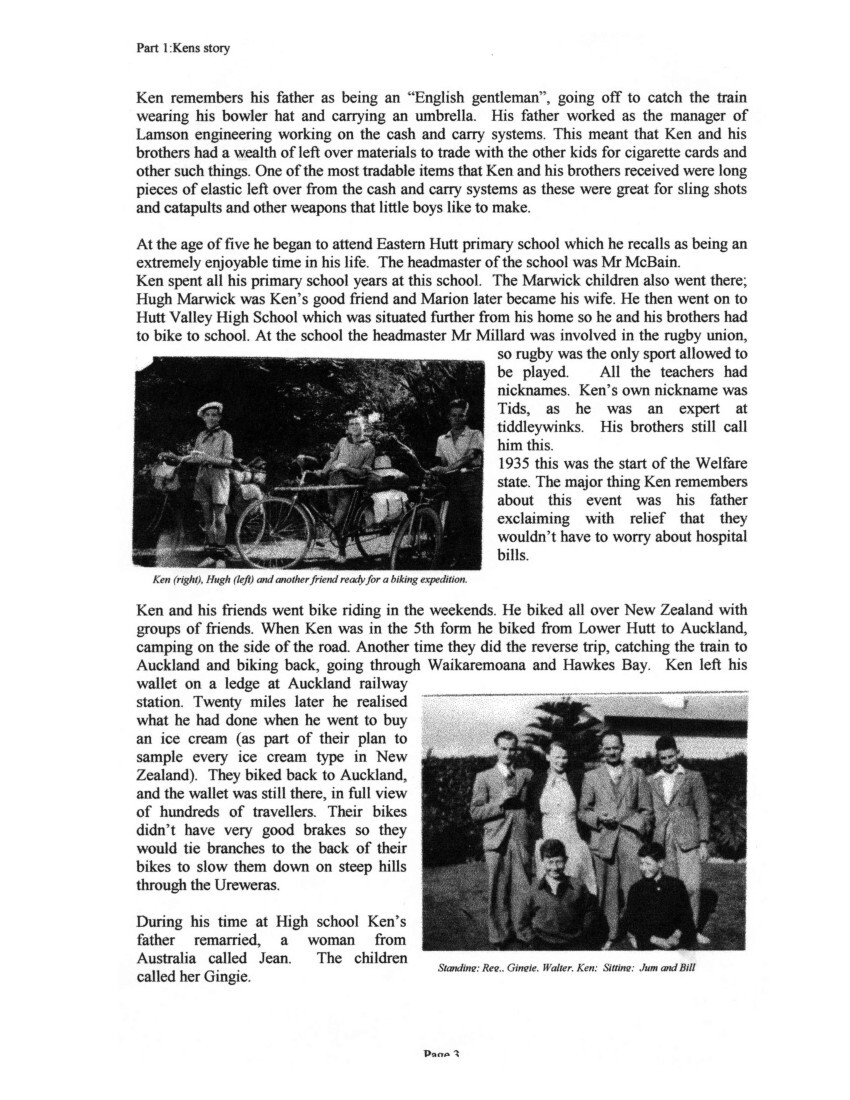
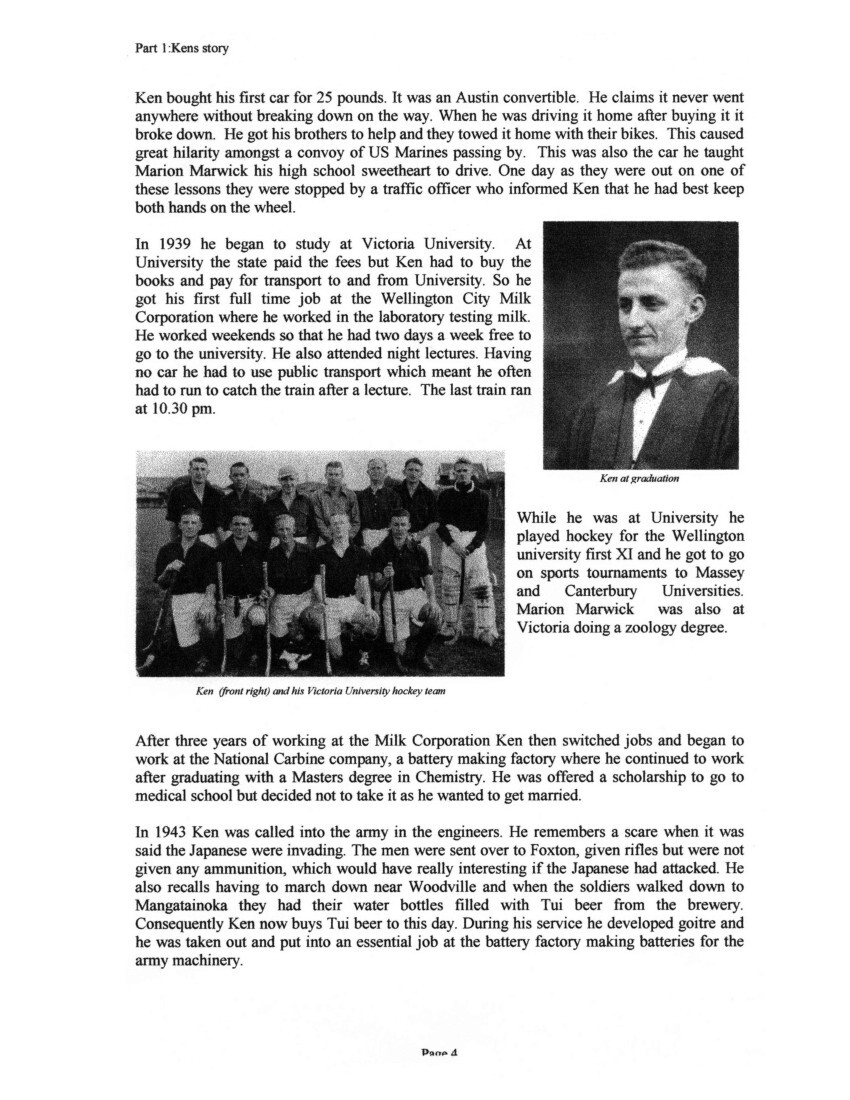

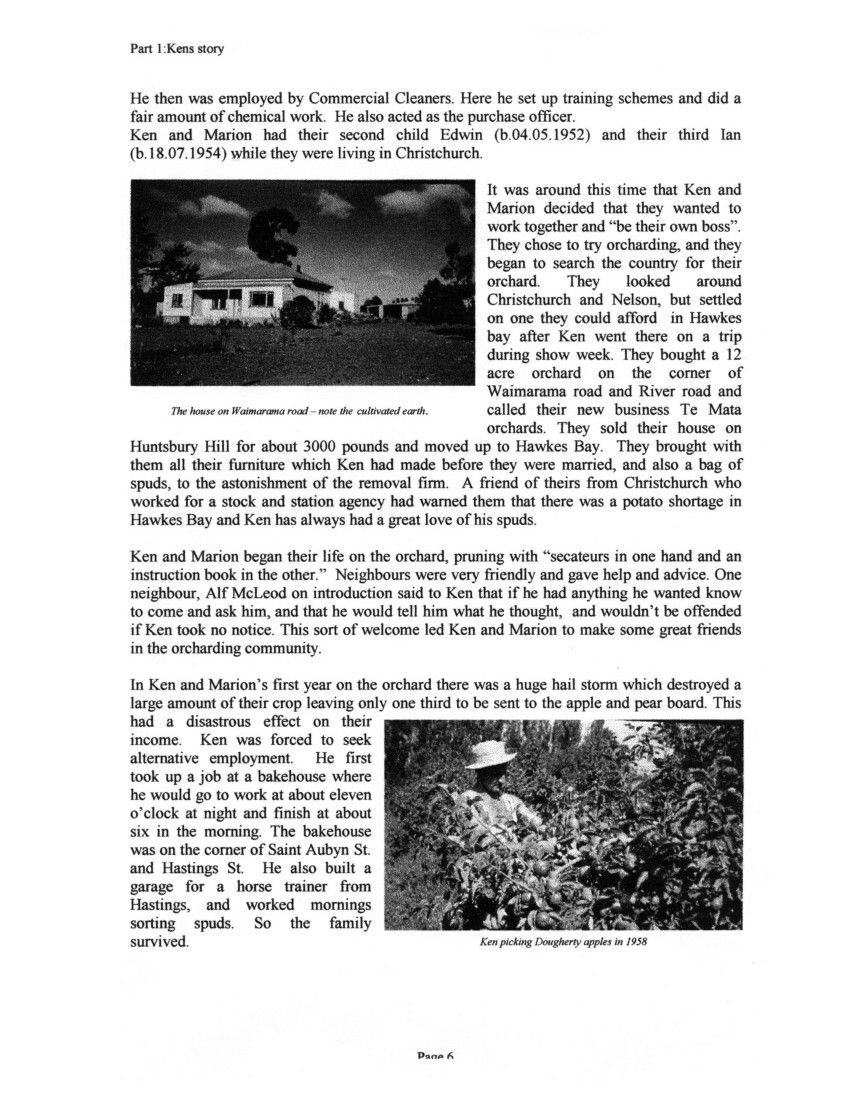
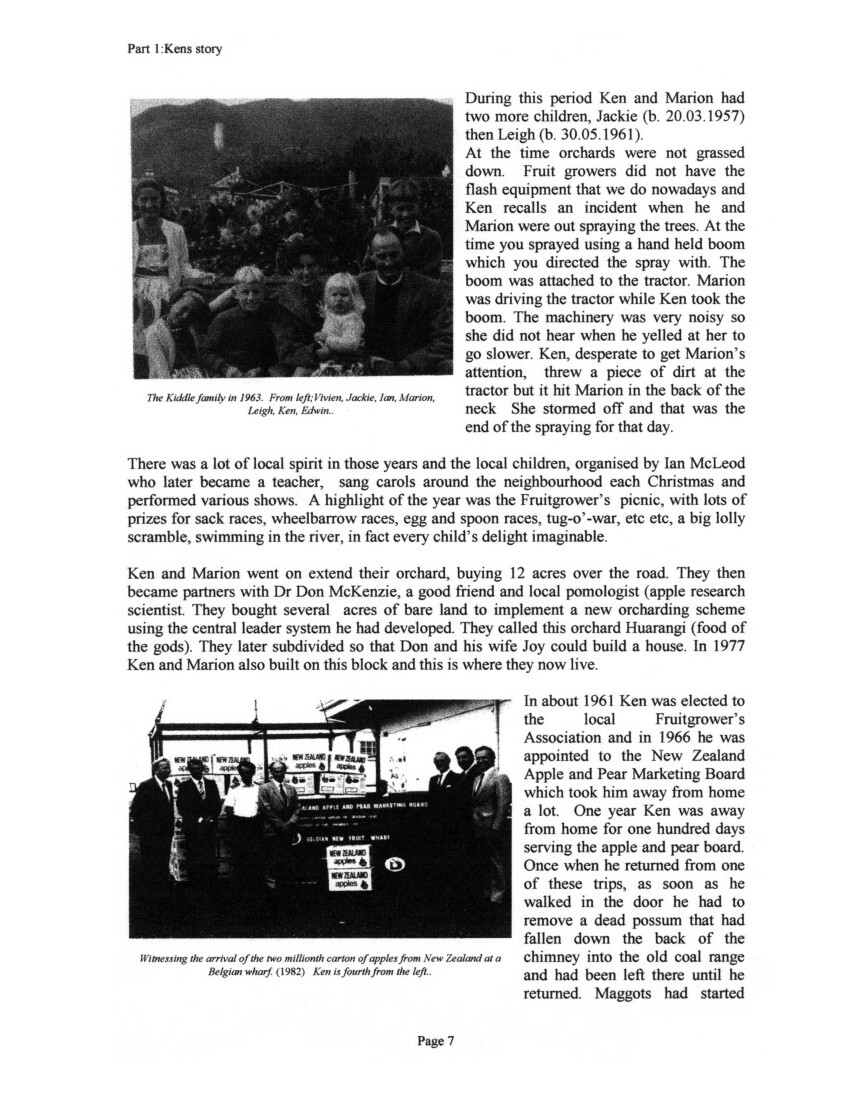
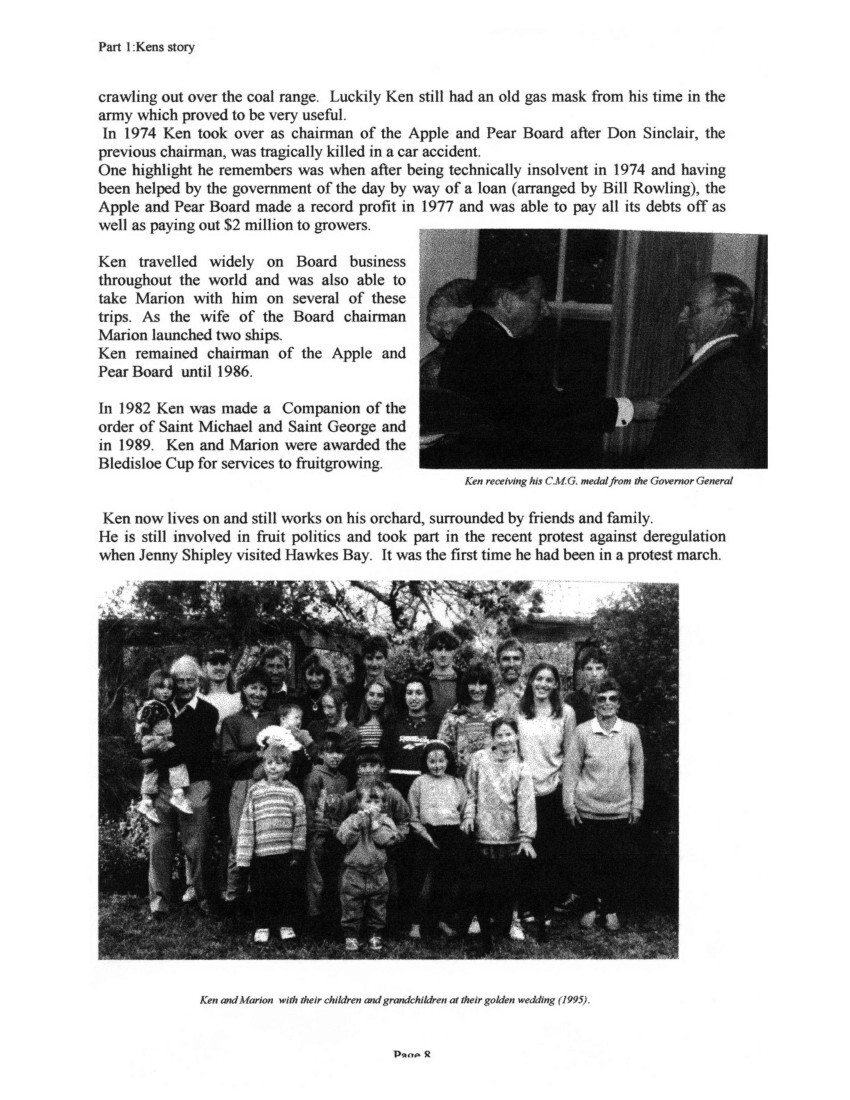









Do you know something about this record?
Please note we cannot verify the accuracy of any information posted by the community.